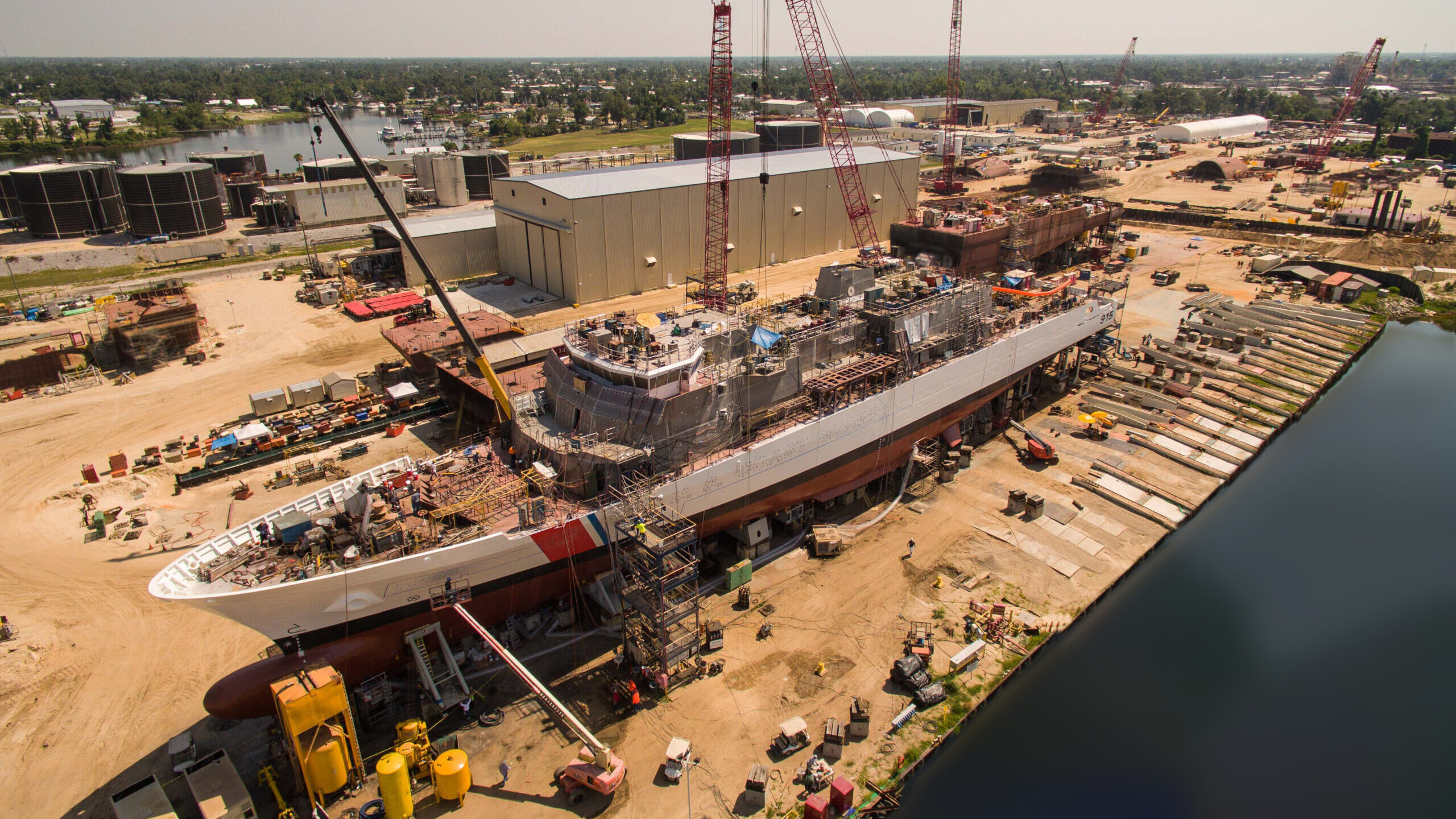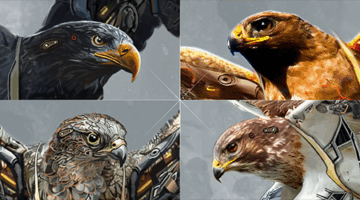
This report was updated 6/29/23 at 9:03 am ET to include a comment from the US Coast Guard.
WASHINGTON — Independent government auditors are warning Congress that a combination of poor shipbuilding policy choices and lingering effects of a devastating 2018 hurricane are threatening to snowball the costs of the Coast Guard’s Offshore Patrol Cutter program and push its schedule further off course.
“The OPC program continues to move forward with construction despite an unstable design, among other issues. Specifically, the Coast Guard began construction of the first four OPC ships without ensuring the shipbuilder sufficiently matured the OPC’s critical technology — the davit — and stabilized its design,” according to the report published Tuesday. “This has already resulted in rework during OPC construction, and the effect will likely compound as production progresses on all four ships.”
The Offshore Patrol Cutter is a top Coast Guard shipbuilding program envisioned to deliver a fleet of 25 ships that will replace the service’s aging fleet of 210-foot and 270-foot Medium Endurance Cutters. The first stage of the program included awarding construction of the first four ships to the Florida-based Eastern Shipbuilding Group.
The Coast Guard program’s second stage, which includes a contract awarded to Austal USA in June 2022, is currently the subject of an ongoing lawsuit. Due to the pending litigation, GAO did not assess any of the work done under that contract for their latest report.
The watchdog found the “total acquisition cost estimate” for the program increased from $12.5 to $17.6 billion between 2012 and 2022 as well as racking up a one-and-a-half-year delay for the delivery of the first four ships.
“The program attributes the 40 percent [cost] increase to many factors, including restructuring the stage 1 contract and recompeting the stage 2 requirement in response to a disruption caused by Hurricane Michael, and increased infrastructure costs for homeports and facilities, among other things,” according to the report.
Another key issue GAO says is the davit — a crane used to deploy and retrieve small boats from the cutter — that has not yet proven itself effective and the service’s failure to develop a plan to remedy that issue. Additionally, auditors say Coast Guard shipbuilding policies may be threatening the program’s chances of success.
“Specifically, the Coast Guard does not require completion of basic and functional design and maturity of all critical technologies, as GAO previously recommended. It also does not require completion of the design of distributive systems — systems that affect multiple zones of the ship — prior to construction of the lead ship,” according to the report. “Significant rework can occur late in construction, resulting in subsequent cost growth and delays, if design of distributive systems are not completed prior to construction.”
The watchdog also evaluated prime contractor Eastern Shipbuilding Group’s work to date and concluded the company is underperforming despite “extraordinary contractual relief” granted following the damage caused by Hurricane Michael in 2018.
“For example, as of March 2022, the OPC 1 indicator measuring schedule performance was 0.74. This means that for every dollar planned, the program was accomplishing 74 cents of work,” according to the report. “Generally, a program is considered to be struggling if it does not achieve at least 90 cents of work for every dollar planned, according to leading practices for managing program costs.”
In a statement today to Breaking Defense, Eastern Shipbuilding’s CEO Joey D’Isernia defended his firm, saying, “We have outperformed recent major government shipbuilding programs; and we are performing despite significant impacts from a category 5 hurricane, a global pandemic, and significant shafting delays.”
Regarding the davit, the company said it is working with the Coast Guard to test and integrate the technology prior to the ship’s delivery. “The davit manufacturer’s delivery schedule aligns with the forecast ship delivery schedule for OPC-1,” he added.
Eastern Shipbuilding has previously disclosed an issue with the ship’s main drive shaft, which is produced by a subcontractor and is discussed in the report as being responsible for some of the schedule delays. D’Isernia said today his company, the Coast Guard and other government agencies “have collectively concluded shafting repairs and schedule mitigation efforts, and shafting is currently being shipped to the yard with launch to occur shortly thereafter, and delivery in 2024.” (Due to the amount of time it takes GAO to study and report on government programs, issues included in their reports can be overtaken by events by the time their work is made public, though in this case, after publication, GAO told Breaking Defense their published timeline is currently accurate.)
D’Isernia also argued his company has “performed exceptionally in this post hurricane environment” and cited the fact Eastern Shipbuilding has met a series of milestones established by the government prior to awarding contracts for the second, third and fourth hulls.
“We have also over doubled our workforce since the hurricane, which was the most significant risk identified by the government post hurricane,” he added.
As part of its reports, GAO routinely includes a number of recommendations as well as the response to those suggestions from the corresponding government agency, in this case the Coast Guard, which operates under the Homeland Security Department.
The service agreed with three of GAO’s recommendations, including to develop a technology maturation plan for the davit prior to builder’s trials; to test an integrated prototype of the davit in a “realistic environment prior” to the trials; and to update acquisition policy to ensure shipbuilding programs complete “major portions of all distributive systems” as part of the functional design prior to starting lead ship construction.
The service disagreed with GAO’s recommendation to successfully demonstrate integrated prototypes of “critical technologies” for OPC stage 2. In its written response, DHS argued the davit is the only critical technology and the shipbuilder in stage 2 — Austal — “selected a davit with a demonstrated pedigree in operational environments.”
The Coast Guard also disagreed with a GAO recommendation to ensure OPC stage 2 achieves a “sufficiently stable design,” which the watchdog defines as “100 percent completion of basic and functional design, including routing of major distributive systems and transitive components that affect multiple zones of the ship.”
The service argued its own definition of a “stable design” is based off prior GAO feedback as well as following the US Navy’s practices.
“The Coast Guard appreciates the GAO’s diligent work in conducting this audit of the OPC program and looks forward to working with them on implementing the recommendations contained in the report as outlined by our agency response,” a service spokesperson told Breaking Defense following this story’s publication.

